

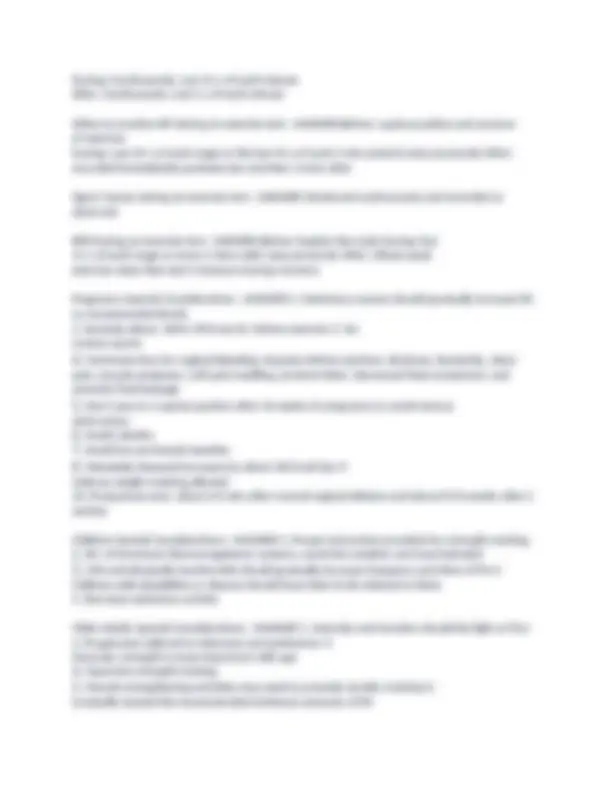
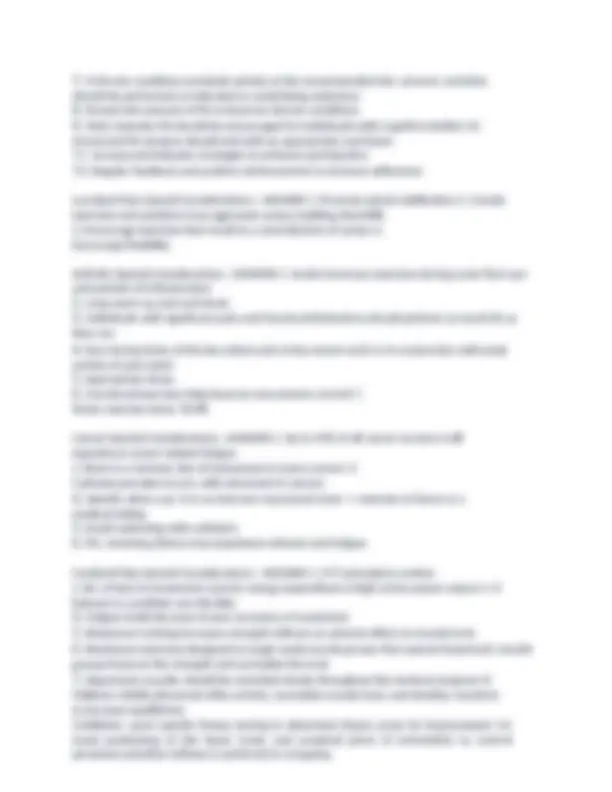
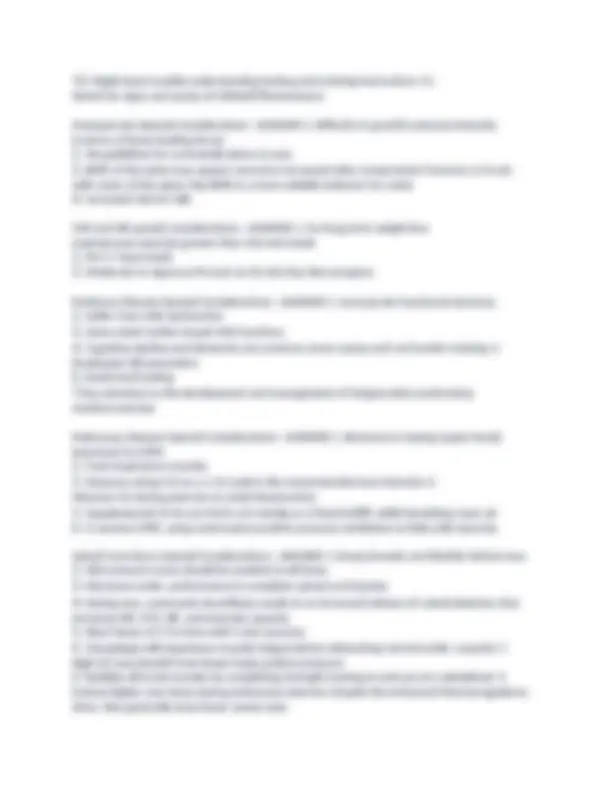
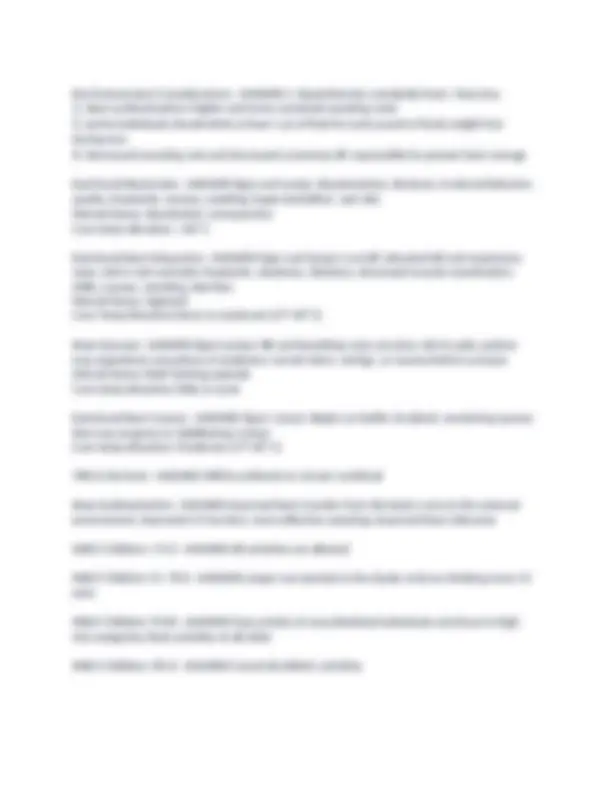
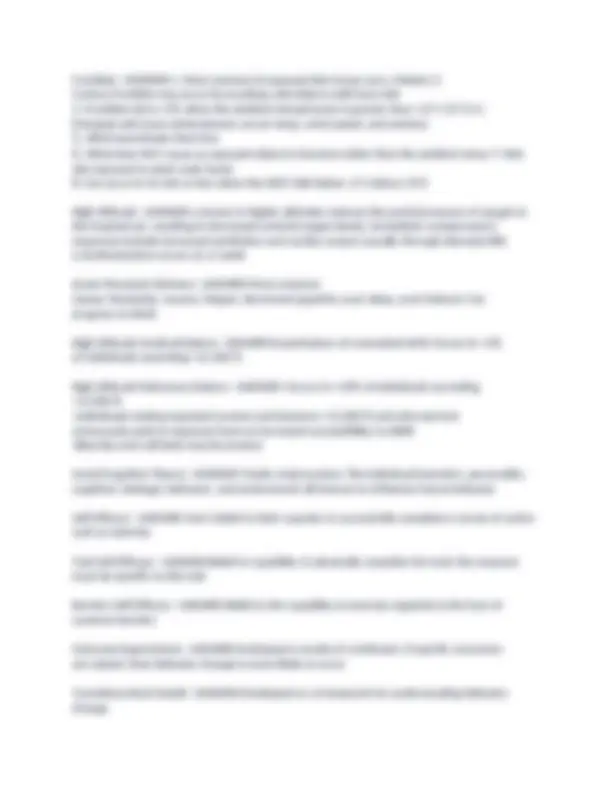


Study with the several resources on Docsity

Earn points by helping other students or get them with a premium plan


Prepare for your exams
Study with the several resources on Docsity

Earn points to download
Earn points by helping other students or get them with a premium plan
Community
Ask the community for help and clear up your study doubts
Discover the best universities in your country according to Docsity users
Free resources
Download our free guides on studying techniques, anxiety management strategies, and thesis advice from Docsity tutors
ACSM CEP EXAM 2025 QUESTIONS AND ANSWERS Absolute Contraindications to Exercise Testing - ANSWER • A recent significant change in the resting ECG suggesting significant ischemia, recent MI (within 2 d), or other acute cardiac event • Unstable angina • Uncontrolled cardiac dysrhythmias causing symptoms or hemodynamic compromise • Symptomatic severe aortic stenosis • Uncontrolled symptomatic heart failure • Acute pulmonary embolus or pulmonary infarction • Acute myocarditis or pericarditis • Suspected or known dissecting aneurysm • Acute systemic infection, accompanied by fever, body aches, or swollen lymph glands
Typology: Exams
1 / 12

This page cannot be seen from the preview
Don't miss anything!







Absolute Contraindications to Exercise Testing - ANSWER • A recent significant change in the resting ECG suggesting significant ischemia, recent MI (within 2 d), or other acute cardiac event
Absolute Indications for stopping an exercise test - ANSWER • Drop in SBP ≥10 mmHg with an increase in work rate, or if SBP decreases below the value obtained in the same position prior to testing when accompanied by other evidence of ischemia
During: Continuously, Last 15 s of each minute After: Continuously, Last 5 s of each minute When to monitor BP during an exercise test - ANSWER Before: supine position and posture of exercise During: Last 45 s of each stage or the last 45 s of each 2 min period (ramp protocols) After: recorded immediately postexercise and then 2 mins after Signs/ Symps during an exercise test - ANSWER Monitored continuously and recorded as observed RPE During an exercise test - ANSWER Before: Explain the scale During: last 15 s of each stage or every 2 mins with ramp protocols After: Obtain peak exercise value then don't measure during recovery Pregnancy Special Considerations - ANSWER 1. Sedentary women should gradually increase PA to recommended levels
Frostbite - ANSWER 1. Most common in exposed skin (nose, ears, cheeks) 2. Contact frostbite may occur by touching cold objects with bare skin
12,000 ft -Individuals making repeated ascents and descents >12,000 ft and who exercise strenuously early in exposure have an increased susceptibility to HAPE -Blue lips and nail beds may be present Social Cognitive Theory - ANSWER Triadic reciprocation: The individual (emotion, personality, cognition, biology), behavior, and environment all interact to influence future behavior Self Efficacy - ANSWER One's belief in their capacity to successfully complete a course of action such as exercise Task Self Efficacy - ANSWER Belief in capability to physically complete the task; the measure must be specific to the task Barriers Self Efficacy - ANSWER Belief in the capability to exercise regularly in the face of common barriers Outcome Expectations - ANSWER Anticipatory results of a behavior; if specific outcomes are valued, then behavior change is more likely to occur Transtheoretical Model - ANSWER Developed as a framework for understanding behavior change.
5 stages: Precontemplation, contemplation, preparation, action, maintenance Precontemplation to contemplation - ANSWER Processes Focus: Consciousness raising, environmental reevaluation, dramatic relief Decisional Balance: Pros < Cons Self Efficacy: Low Contemplation to Preparation - ANSWER Processes Focus: Consciousness raising, environmental reevaluation, self reevaluation, dramatic relief Decision Balance: Pros>Cons Self Efficacy: increasing Preparation to Action - ANSWER Processes Focus: Self Liberation Decision balance: Pros>>Cons Self Efficacy: high Action to Maintenance - ANSWER Processes Focus: stimulus control, reinforcement management, counterconditioning, helping relationships Decision balance: Pros >>Cons Self Efficacy: high Health Belief Model - ANSWER An individual's beliefs about whether or not he/she is susceptible to disease, and his/her perceptions of the benefits of trying to avoid it, influence his/her readiness to act Self Determination Theory - ANSWER 3 primary psycho social needs that need to be satisfied: relatedness, competence (mastery) , and autonomy (self determination) Theory of Planned Behavior - ANSWER -Intention to perform a behavior is the primary determinant of behavior. -Intentions are determined by an individual's attitude, subjective norms, and predictive behavioral control Perceived behavioral control - ANSWER individual's belief about how easy or difficult performance of the behavior is likely to be Social Ecological - ANSWER Considers the impact of and connections between individuals and their environment How to build Self Efficacy - ANSWER Mastery experiences, social modeling., social persuasion, reduction of stress and physical/emotional arousal Client Centered PA Counseling (Five A's Model) - ANSWER 1. Address agenda 2. Assess